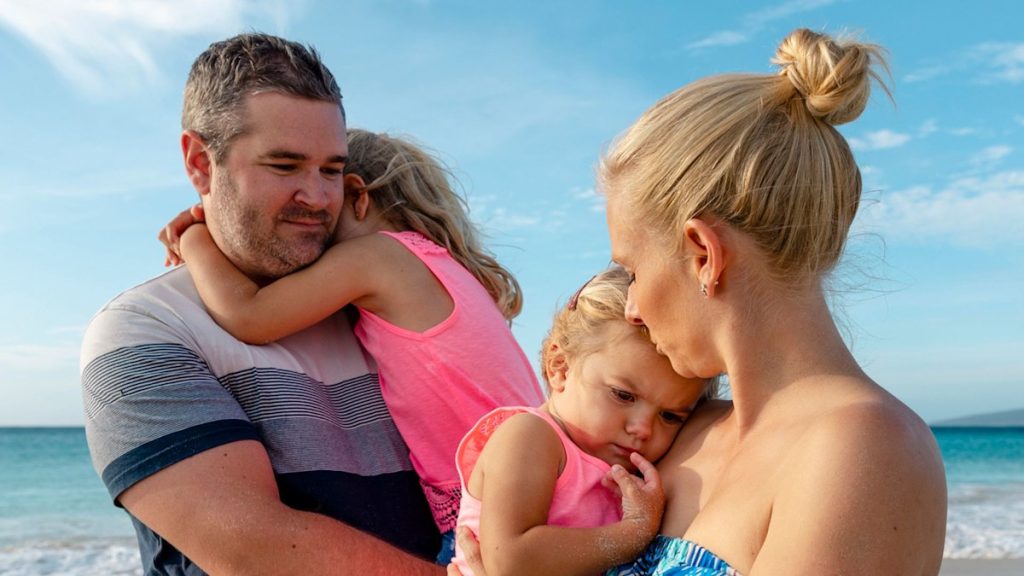Debunking the Sunscreen Myth: Protecting Our Children from the Sun’s Harmful Rays
Former reality TV star Sam Faiers recently ignited a firestorm of controversy on social media by revealing that her family, including her young children, does not use sunscreen. Citing a belief that children can build a tolerance to the sun and concerns about the alleged toxicity of sunscreen ingredients, Faiers’ statement sparked immediate backlash from medical professionals and concerned parents alike. This incident highlights the dangerous spread of misinformation in the digital age, particularly concerning health and wellness, and underscores the vital need for evidence-based information when making decisions about our children’s well-being. Dermatologists and other experts have swiftly debunked Faiers’ claims, emphasizing the critical importance of sunscreen in protecting children from the detrimental effects of the sun’s ultraviolet (UV) radiation.
Dr. Nora Jaafar, a dermatologist and aesthetics doctor, responded directly to Faiers’ claims, emphasizing the inaccuracies and potential harm of such misinformation. She stressed that children cannot develop a tolerance to the sun, as UV radiation causes cumulative DNA damage with each exposure, even in the absence of a visible sunburn. This accumulated damage significantly increases the lifetime risk of skin cancer and accelerates premature aging. Children’s skin is particularly vulnerable because it is thinner and more susceptible to sun damage than adult skin. Protecting children’s skin in their early years is therefore crucial for their long-term health. While Dr. Jaafar acknowledged the benefits of seeking shade, wearing protective clothing, and avoiding peak sun hours, she emphasized that these measures should supplement, not replace, sunscreen use.
Addressing Faiers’ concerns about toxic ingredients in sunscreen, Dr. Jaafar highlighted the stringent regulations governing sunscreen production and sale in the UK and EU. Sunscreens undergo rigorous safety assessments before they reach consumers, ensuring they are safe for use. For those seeking more natural options, mineral-based sunscreens containing zinc oxide or titanium dioxide offer a safe and effective alternative. These ingredients work by creating a physical barrier on the skin’s surface that blocks UV rays without being absorbed into the body. Dr. Jaafar particularly recommends fragrance-free mineral sunscreens suitable for sensitive and eczema-prone skin, especially for children.
The controversy surrounding Faiers’ statement reflects a broader issue of misinformation propagation by influencers on social media platforms. While influencers often have large and engaged audiences, they may lack the necessary expertise to provide accurate medical advice. This can lead to the spread of harmful misinformation and potentially dangerous health practices among their followers. Dr. Jaafar emphasized the need for influencers to exercise caution when discussing medical information, particularly when it comes to topics as critical as cancer prevention. Skin cancer is one of the most preventable forms of cancer, and proper sun protection, including regular sunscreen use, plays a vital role in minimizing risk.
This incident serves as a stark reminder of the importance of seeking credible sources of information, particularly when it comes to health and wellness. The internet, while a valuable resource, is also rife with misinformation. It is essential to critically evaluate the source of any health-related information and consult with qualified medical professionals before making decisions about our health or the health of our children. Relying on anecdotal evidence or unsubstantiated claims can have serious consequences, especially when it comes to protecting ourselves and our children from preventable diseases like skin cancer.
The debate sparked by Faiers’ comments underscores the need for continued public education about sun safety and the importance of sunscreen. Parents and caregivers must prioritize protecting children’s delicate skin from the harmful effects of the sun. This includes incorporating a comprehensive sun protection strategy that combines sunscreen application with other protective measures, such as seeking shade, wearing protective clothing, and avoiding peak sun hours. By equipping ourselves with accurate information and adopting responsible sun protection practices, we can safeguard our children’s health and reduce their risk of developing skin cancer later in life.


